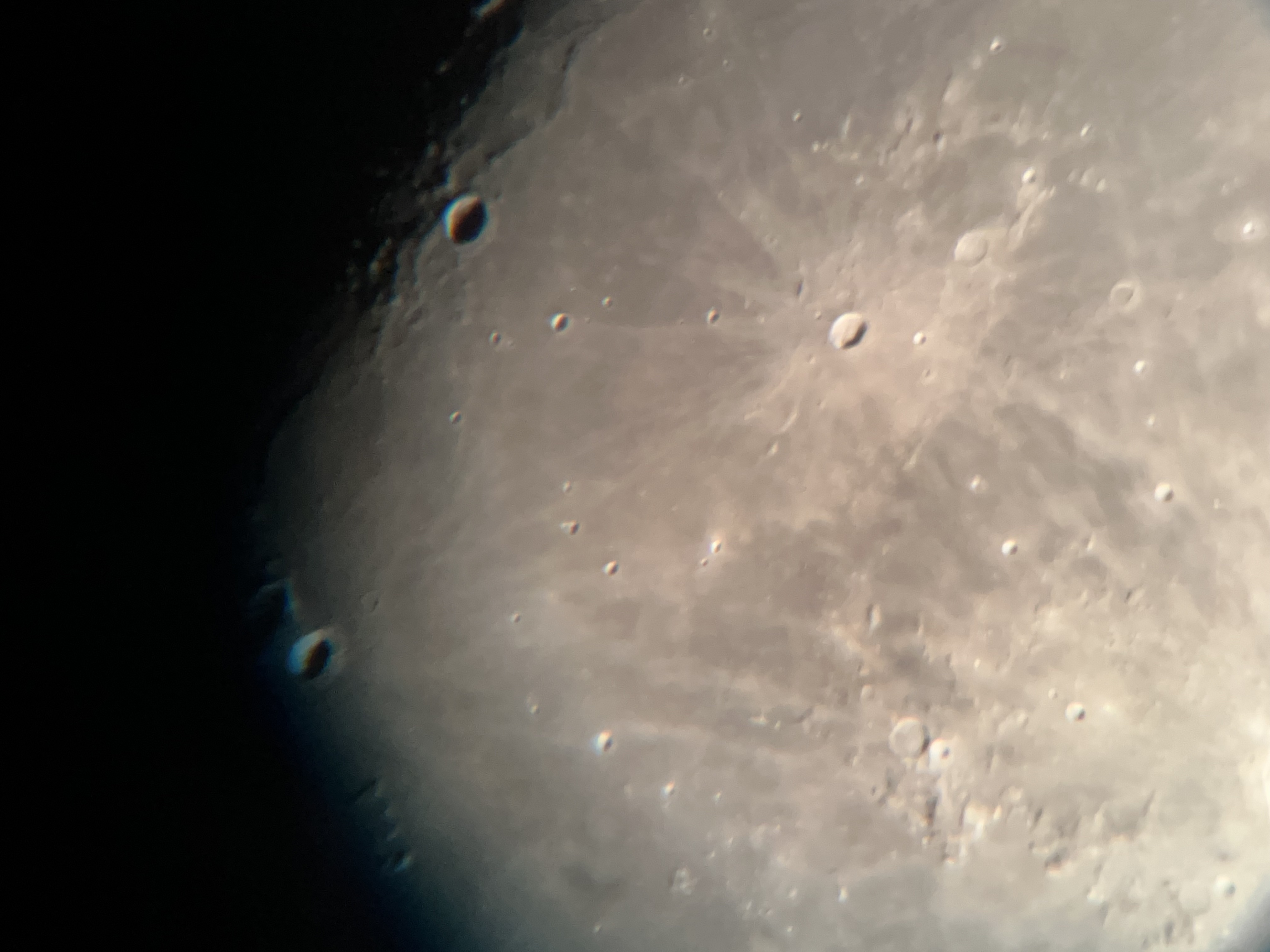Craters: Anaximander, Aristachus, Babbage, Bouguer, Carpenter, Clavius, Encke, Foucault, Gassendi, Gassendi A, Harpalus, Herodotus, Herschel, Horrebow, Keplar, Krieger, Mairan, Marius, Marius A, Marsenius, Porter, Prinz, Rutherford, Schiller, T Mayer, Tycho, Wollaston
Maria: Mare Frigoris, Oceanus Procellarum, Sinus Iridum,
Valleys: Vallis Schröteri
Location: SCO
Date: 2024-09-14/15
Time: 18:00 PM - 1:30 AM ADT
Equipment: Visual, EvoStar 80 ED telescope
Eyepiece: Svbony 30mm-10mm Zoom eyepiece
Transparency: Very Good (4)
Seeing: Good (3)
The evening began at 6 PM with the Annual SCO BBQ. It then turned into a spectacular evening “🎼 under the light, of the silvery Moon.” The wind died down early in the evening making it easier for a few mosquitoes to find us but once the temperature dropped a bit, they disappeared.
I believe we all had a grand time looking at the Moon 🌖, be it through the scopes set up or through our binoculars. I had my 10” Meade SCT with a 10-30mm SvBony eyepiece. Had a blast locating craters and other features along the terminator, and certainly in sharing them with other members “new” to lunar observing and showing them on the Sky&Telecope lunar map where the features were located.
Here are my favourite photos - north to south - taken with my iPhone 13 Pro attached to the eyepiece with my NexYZ 3-Axis Universal Smartphone Adapter. I had viewed all of them throughout the evening but then went back to capture a photo of each. No records were taken of these observations as the intent of the evening was to introduce members to the Moon and some of its special features.
|
The shores of Mare Frigoris above Sinus Iridium (photo taken at 11:04 PM) The large crater with an internal crater is Herschel with Horrebow on its SW wall. Directly above it is Anaximander with Carpenter to the east. The large crater in the darker Mare floor is Harpalus. Below Harpalus are 2 craters (L to R) Bouguer and Foucault. To Herschel’s west, are two small unnamed craters, and then the crater South with Babbage above it (in the dark). |
|
|
In Oceanus Procellarum - Aristarchus, Herodotus & Vallis Schröteri (Schröter’s Valley) on the Aristachus Plateau (photo taken at 11:07 PM) On the right, are two craters - Aristarchus (the bright-rimmed one) and Herodotus. From the northern (left) rim, you can see a snake-like valley heading NW - Vallis Schröteri, the largest sinuous valley (rille) on the moon (~ 155km). The start of the rill has been termed the “Cobra’s Head” due to its resemblance to a snake. You will also see the remnants of another crater (Prinz) near Aristarchus, and to the left/above Prinz are two small craters Krieger (with a small crater on its wall) and Wollaston. On the far left is Marian. |
|
|
West of Copernicus - Kepler & Encke with T. Mayer (11:09 PM) Copernicus and its spectacular ejecta field were very easy to find but what I wanted to have a closer look at Kepler and Encke. Keplar (right of centre) certainly has a larger ejecta field than Encke and is deeper given the shadows on both, but both are much smaller than Copernicus. To the left of Kepler, is T. Mayer with its very flat floor, bright-ish, low-rimmed walls. On the upper right very close to the terminator is Marius and to its lower left is Marius A. |
|
|
The Diamond Ring on Mare Nubium South of Oceanus Procellarum is Mare Nubium. On its northern shore, you see the large crater Gassendi with its two central peaks and its broken southern rim. Because of being inundated by lava during the formation of the Mare, only the rim and central peaks remain above the surface. On its northern wall is the crater Gassendi A. Together, they give the impression of a diamond ring. To the right of Gassendi is a crater with a darker floor and shadows - Marsenius. |
|
|
Tycho & Clavius in Southern Highlands Tycho with its central peak is centred in this photo. I refer to this crater as ‘the flower” because to me Tycho is the flower’s centre with the smaller, shallower craters encircling it appear as petals. Below Tycho is Clavius - a beautiful crater with an arc of 4 craters (all varying ages, apparently) on its floor; the 5th in the arc on the crater wall is Rutherford. Across from Rutherford on the opposite wall is Porter. With a much higher magnification, you would see several small impacts made on this crater. The all narrow crater on the upper right is Schiller, appearing appears very elongated due to foreshortening. |
 |



